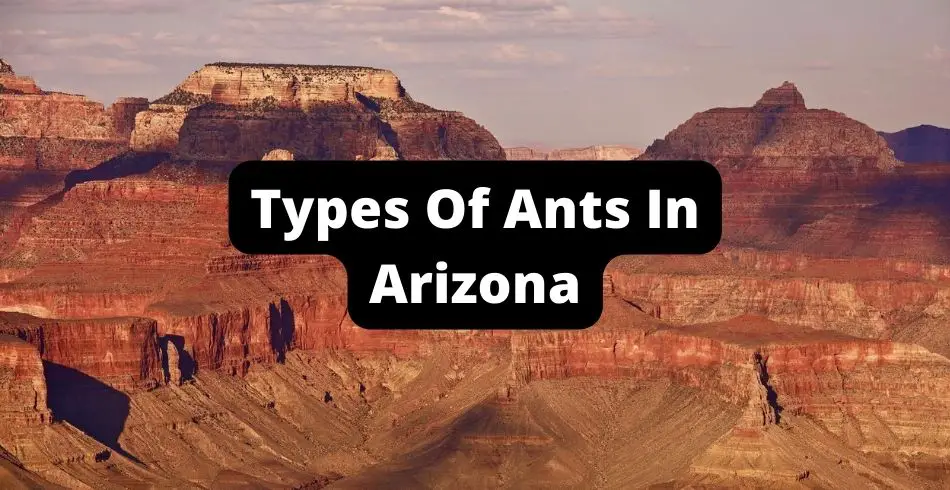Ants can be found almost everywhere in the world, but the type of ants will differ in each place.
While Arizona is known for its deserts, the grand canyon, and the desert botanical garden, we must mention all the cool ants there.
These ants would be perfect to start your ant-keeping journey, as they’re well-adjusted to Arizona’s humidity, water, and temperature!
We have most states listed here: ant in each state database
Types of Ants in Arizona
The types of ants found in Arizona are Acrobat Ants, Argentine Ants, Carpenter Ants, Citronella Ants, Tawny Crazy Ants, Fire Ants, Forelius Ants, Harvester Ants, Honeypot Ants, Leafcutter Ants, Odorous House Ants, Pavement Ants, Pharaoh Ants, Rover Ants
Argentine Ants
An ant that is dominant in northern Argentina, Bolivia, Uruguay, Paraguay, and southern Brazil is called the Argentine Ant, known initially as Iridomyrmex Humilis.
They have spread to many regions in the world with the same subtropical climate.
The ants can fit through fractures and openings as tiny as 1 millimeter in diameter. These ants range in length from 1.6 to 2.8 millimeters.

The Queens are taller and longer than the worker ants, measuring about 4.2–6.4 millimeters in length.
These ants will establish colonies under the dirt, in crevices in concrete pillars, within boards or timbers, or even amongst the walls in human homes.
Due to their limited capacity to construct deeper homes, they typically build shallow nesting sites in natural settings, usually behind tiny stones or scattered fallen leaves.
Nevertheless, Argentine ants will quickly take up any area, eating and hunting all the different types of insects within the same ecosystem.
Pavement Ants
The head and thorax of pavement ants are marked with grooves, the thorax being the only part of the body-bearing spines.
Their size is usually between 2.5 and 3 mm in length.
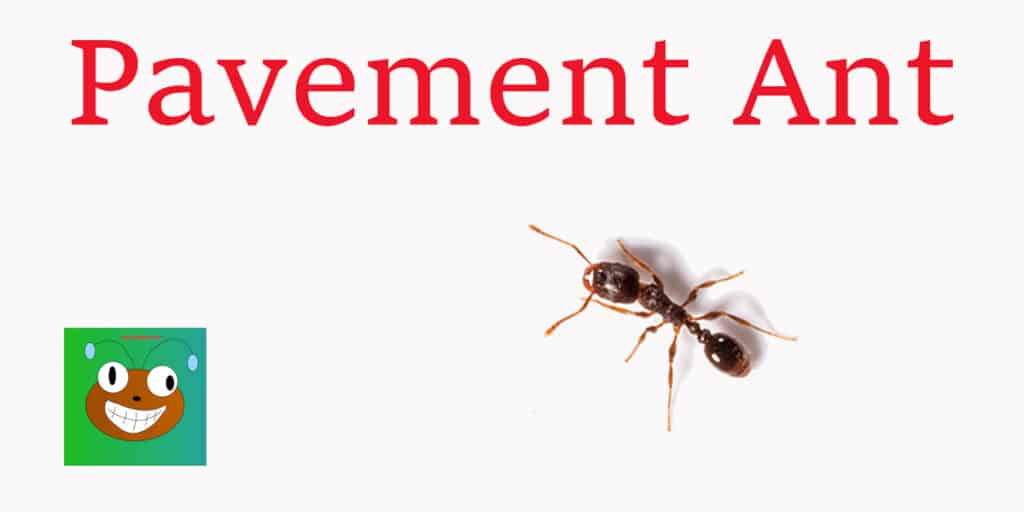
Pavement ants get their name because they typically make their nests under roadways, building foundations, and sidewalks.
Therefore, an area of disturbed soil near a paved surface is likely the result of pavement ant activity.
Pavement ants may build their nests inside buildings near a heat source, mainly during winter.
These trailing ants consume many items, including honeydew from aphids, oily foods, seeds, and dead insects.
Pavement ant colonies include up to 4,000 workers comprising several queens.
The queens are much bigger than the workers, going upwards of 9 mm in length.
Drones and queens that reproduce have wings, which they use during mating.
The drones and young queens searching for partners are frequently spotted on nuptial flights during the end of spring and the start of summer.
Tawny Crazy Ants
These tiny insects live in nests or clusters of nests that resemble each other in appearance and pheromone smell.
Tawny crazy ants will expand into numerous consistently sized clusters throughout the ecosystem.
These ants are brown/dark red and about 1/8 inch long.

If your region has these ants, expect them in very high concentrations.
They like to forage inside despite having outside nests.
Some of their preferred locations are landscaping features such as stones, timber, rubbish heaps, and ant nests with queens where offspring (white larvae) can be found.
One of the word things about these Ants is they don’t leave their nests using the center entrances when they want to get out.
Tawny crazy ants are extraordinarily voracious and will consume anything in their path.
These ants frequently “tend” to devour Hemipterous insects, including aphids, related species, whiteflies, floury bugs, and others.
The workers will encourage the growth and care of aphids, producing a sweet fluid known as “honeydew” (carbohydrate) for the workers to enjoy.
These Insects are drawn to specific pieces of flowers. Mostly the nectaries and the broken parts of overripe fruit.
For nutrition, worker ants will often consume other bugs and tiny animals.
Fire Ants
A number of the approximately 200 distinct insects in the genera are known as “fire ants.”
Due to their red color, they do not belong to the subspecies Solenopsis Richteri.
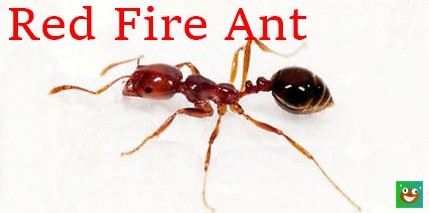
Many of the names possessed by each species of Solenopsis are commonly used interchangeably when referring to each other, such as the term “red ant.”
The three body parts of adult fire ants are the skull, the thoracic, and the abdomen, along with three sets of limbs and a group of antennas.
Luckily, this is the same as the anatomy of all other adult insects.
The red fire ant has a golden-brown skull with a dark metasoma (abdomen).
The ants vary in length from 2 – 6 mm and are two colored, black and red.
An easy way to identify a fire ant is by its dark abdomen and contrasting red thorax.
These ants are aggressive, eat anything in their path, and breed at an accelerated pace.
Fire ants can become worker ants in just 15 days. These ants are officially a pest in the United States, consuming over 300 million acres.
Pharaoh Ants
Pharaoh ants gained their name from the legend that they were one of the disasters that befell Egypt during the reign of the Ancient Egyptians.
These ants are now commonly found throughout the United States and the rest of the world.
The workers are approximately 1/16 inch by length.

Pharaoh ants have a black gaster tip and a color ranging from yellow and reddish.
The antennas are 12-segmented with a three-segmented ring and have a set of nodes at the waistline (pedicel).
Pharaoh ants consume a wide range of foods, including sweets, fats, and proteins.
Pharaoh ants are also well-known for being scavengers and eating other dead insects and bugs.
Pharaoh ant colonies are typically found in giant structures’ floor spaces, walls, or ceilings.
These ants are a health problem in clinics and hospitals since they can spread harmful germs due to their resilient and infesting nature.
Rather than swarming, these ant colonies’ “bubble.” Meaning they split apart and create sub-colonies, venturing into new sites.
As a result, colonies can get extremely big, with over 100,000 ants.
Odorous House Ants
The worker odorous house ants are around 3mm long and black to dark brown.
They have antennae that resemble a long stick.
Crushed odorous house ants produce a pungent, rotten coconut-like stench that gives these insects their name.
Odorous house ants build their nests indoors next to moist areas, such as heaters, and heater cavities along hot water pipes, under leaking fixtures, and on termite-damaged wood.
Outside, odorous ants are frequently discovered on bare soil or beneath firewood piles.
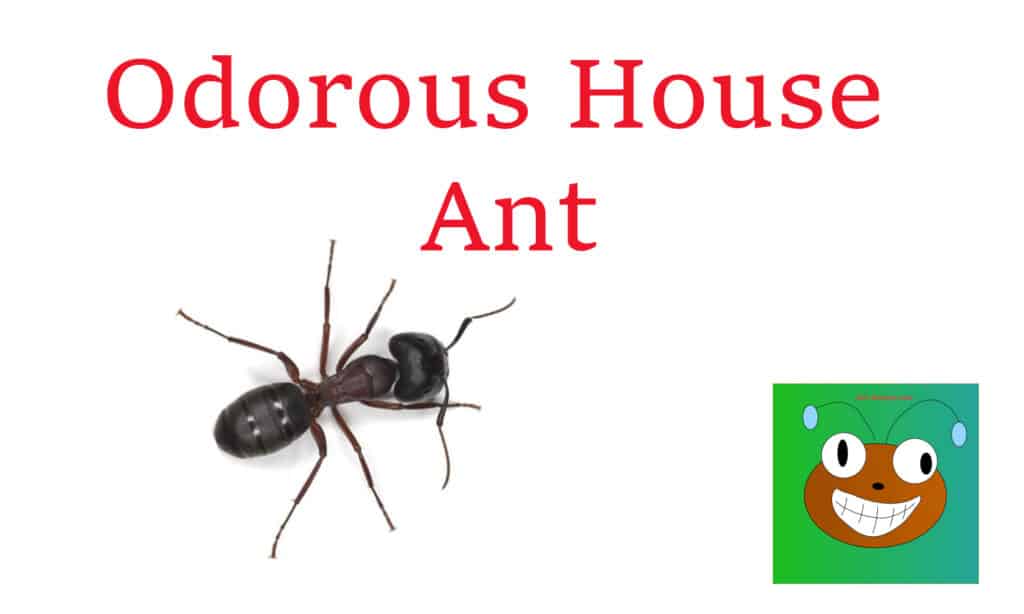
Odorous house ants enjoy eating sweets and particularly enjoy consuming honeydew.
Occasionally, they eat other things, such as pet food or insects.
They will often relocate their nests because of rain.
They create new colonies following mating flights at the end of spring and summer.
Colonies are also split by the “budding” process, in which a queen leaves her nest with some workers to start a new colony elsewhere.
Acrobat Ant
The term “acrobat ant” refers to the Crematogaster Ashmeadi.
There are around ten kinds of Crematogaster throughout the southern United States, with Crematogaster Ashmeadi being the most prevalent species.

Due to their incredible ability to raise their belly (gaster) over their whole thorax, individuals of this species are called acrobat ants for their … acrobats.
The average length of acrobat ants ranges from 2.6 to 3.2 mm and is considered a tiny to medium size ant.
Their glossy spines range in hue from pale red to brown and black.
However, an acrobat ant’s most distinctive feature is the heart-shaped gaster, raised above its thorax when threatened.
These ants love to harbor inside of trees and crawl all over wires.
One of the easiest ways to spot these ants is by inspecting wires and looking for their waste.
A huge nest may extend over three pine trees if two or more trees are nearby.
A colony of acrobat ants lives in each pine, fiercely protecting their territory.
Carpenter Ants
Carpenter ants get their name by digging into the wood to make their nests, creating insulted homes and tunnels within the abandoned wood.
These ants will only chew and burrow through the wood to build nests.
They do not eat the wood.
This makes Alaska a great place for them to find shelter, as there are tons of places with wet, damp wood.
Worker Carpenter ants’ length ranges from 3 to 15mm.
Depending on the species, there is quite a wide range, but the queen is usually 2-3 times bigger (up to 30mm in length).
Carpenter ants that are black are a frequent pest, but these insects can also be an all-red, all-brown, or red-black mix.
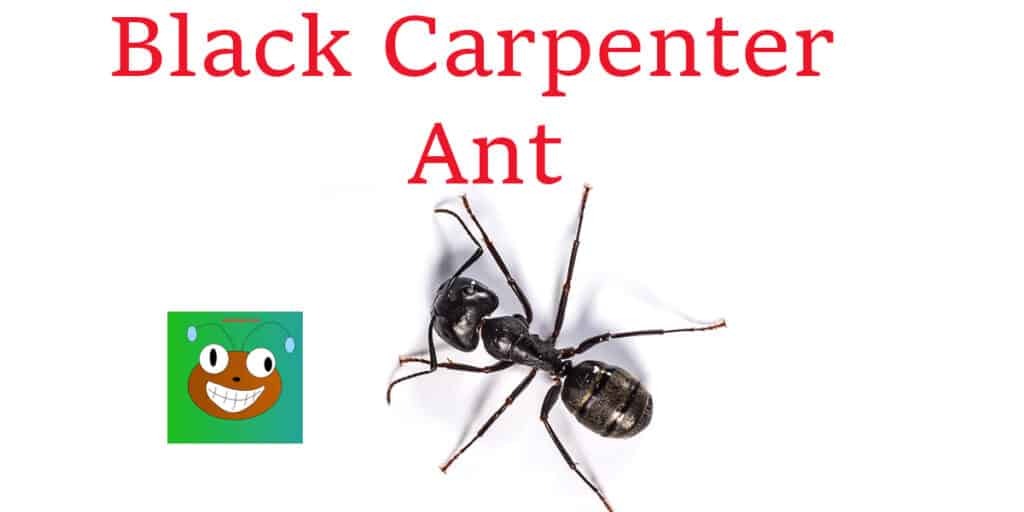


When mature, the black western carpenter ants colony has as many as ten to twenty thousand workers.
In some cases, colonies can get so big that they have more than fifty thousand ants.
No matter the size of the Carpenter ant’s nest, there is only one active, wingless queen.
This goes on until the colony is about a year old, and the queen will start to develop swarmers.
These swarmers age and mature for about another year, then head off to start their colony.
Swarmers arrive from May through August in the east of the United States.
In the west, expect to see swarmers from February till June.
Little Black Ant
The little black Ant is native to North America.
Known for their lustrous black hue, the workers are 1 – 2 mm long, and the queen is 4 – 5 mm in size.
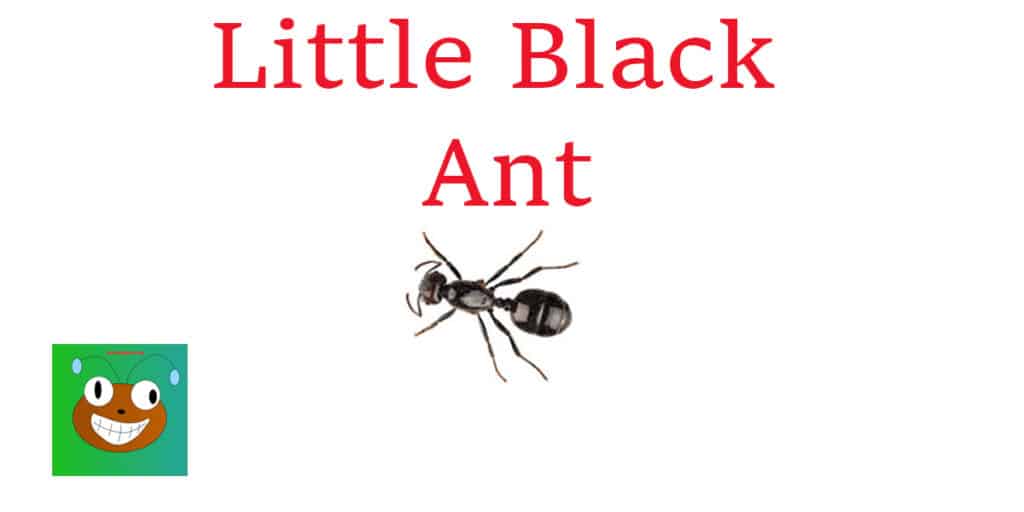
A colony may have more than one queen because it’s a polygynous species.
While they have many queens, they will only have one cluster of worker ants.
A nest typically has a few hundred workers, a modest size.
These scavengers, known as Monomorium Minimum, can eat anything, including dead insects and bird droppings.
Some of their favorite insects to eat are fall webworm larvae as well as codling moth caterpillars.
They also tend to collect honeydew insects like the soybean aphid.
Although they prefer to nest on earth mounds, they may scan for other homes in other materials.
Queens and males execute the nuptial flight, bonding in midair. This happens mostly in summertime.
The males pass away soon after.
Every queen builds a fresh nest, gets rid of her wings, then lays eggs.
Since this colony is polygynous, expect more queens shortly after.
It takes around 30 days for an egg to mature into an adult, twice as long as a fire ant.
Citronella ants
The hue of citronella ants ranges from yellow to yellowish-brown.
Workers vary at about 4.25mm in length, and queens can reach lengths of a bit more.
If you see a Citronella ant from the front, their segmented bodies are irregularly rounded.
Citronella ants get their name from the lemon or citrus scent they release when squashed.
Citronella ants are a nocturnal species, usually found during the nighttime.

That means you probably won’t notice too many of these running around the house.
Citronella ants like to build their nests outside in damp soil near a house’s base, below concrete blocks, around logs, and under dead or rotting trees.
Be careful, these ants will build their nests in homes with wet spots, such as behind bathroom walls and beneath kitchen and bathroom flooring.
Citronella ants have a thing for honeydew and can be seen taking care of aphids to harvest them.
As a result, they rarely, if ever, consume food from households.
Rover Ants
Rover ants are relatively tiny, only reaching an adult size of 1/12” – 1/16” inches.
They are typically light yellow and blackish-brown in color.

Beneath exterior stones, fallen leaves, and gardening ties is where rover ants often build their nests.
Additionally, they breed in sandy places and loosened wood at the base of plants (beaches).
These ants can be discovered indoors, in plant pots, in the dining room and bath, within electrical outlets, beneath roofs, and between wall gaps.
Additionally, rover ants are frequently drawn to interior dwelling spaces with dampness and fungal deterioration.
The liquid that aphids and some related species secrete is known as honeydew.
Rover ants enjoy eating tree sap, flower nectars, and other pleasant liquids.
These ants will consume any crumbs, fluids, or other sweet-tasting substances found on surfaces and floors.
Western Harvester Ant
The Western Harvester ant seems to be an issue in America.
These ants frequently consume seeds, as suggested by their generic name.
Workers of Pogonomyrmex also hunt for arthropods (just Pogonomyrmex).
These ants are about 6.5 to 10 mm in length.
Dry, gritty hard materials are perfect for constructing harvester ant homes.
Usually, these ants are found in a hole or a dome in the middle of a tiny ridge, where a group of compact stones frequently encircles and acts as a nest’s entry marker.
Some arid species lack a mound and just hide in cracks and crevices.
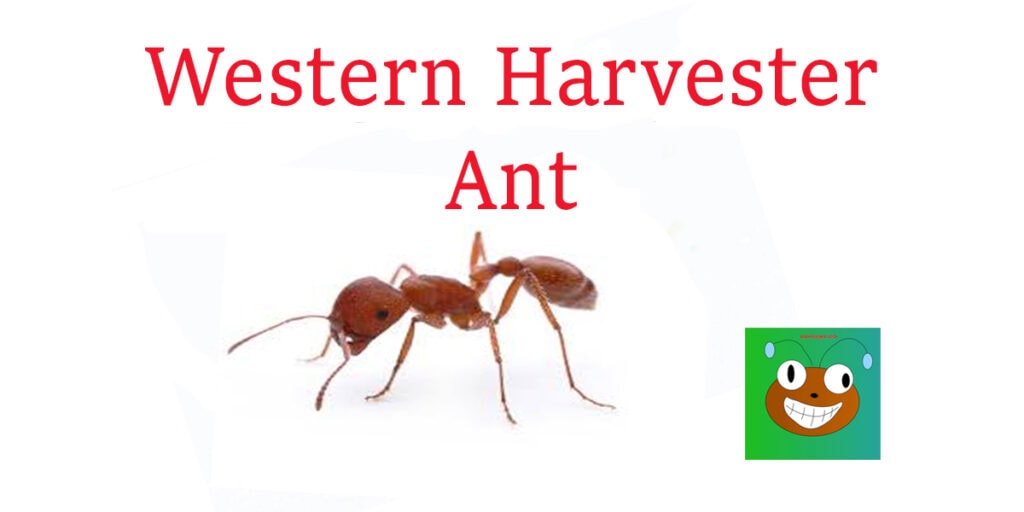
The nest’s diameter ranges from 1 to 10 meters, and its tunnels can go as deep as 5 meters.
The vicinity of the nesting is often bare of any vegetation, and certain species’ colonies can contain around 10,000 ants.
Individual colonies can last 14 to 50 years and hold up to 80 nests every acre.
From each nest, a hunting path may span 60 meters.
Large stretches of land may have minimal vegetation in areas with lots of nesting activity.
